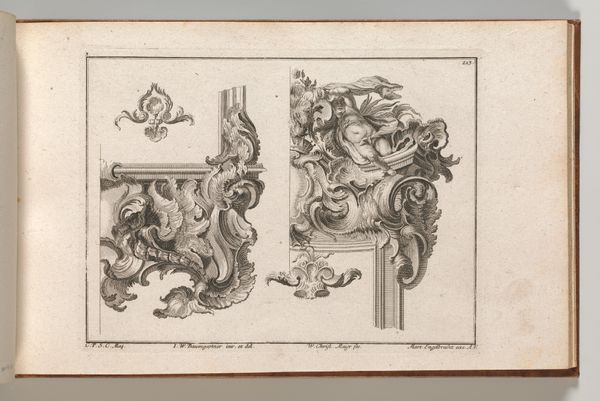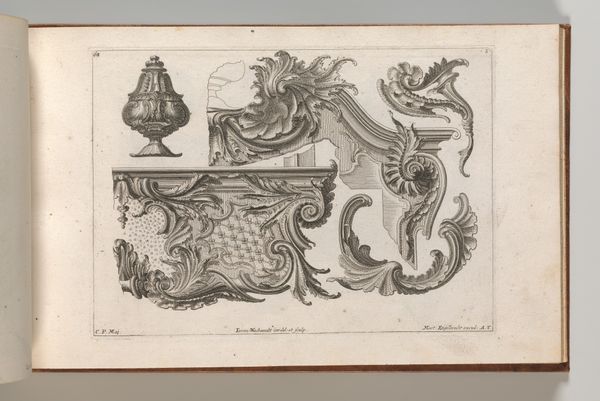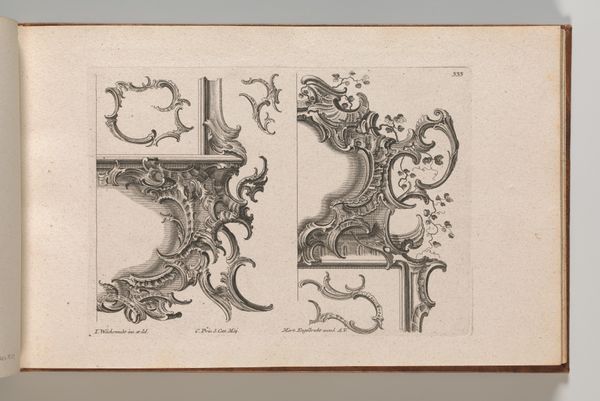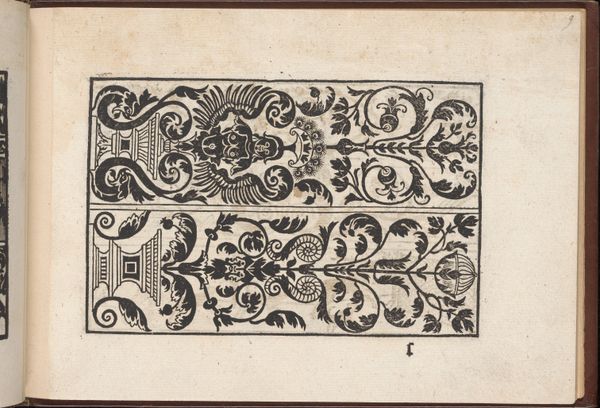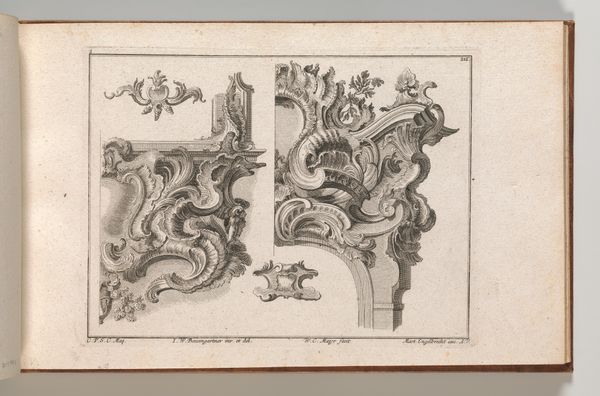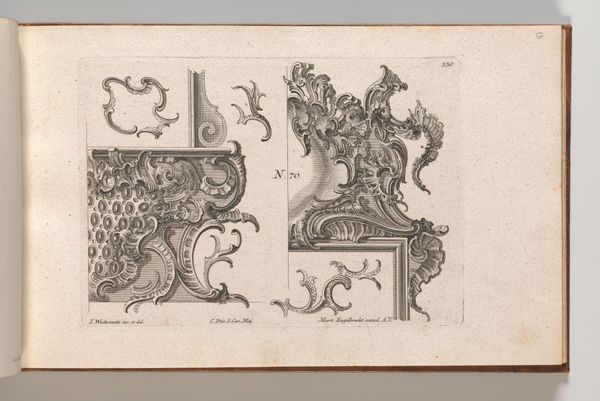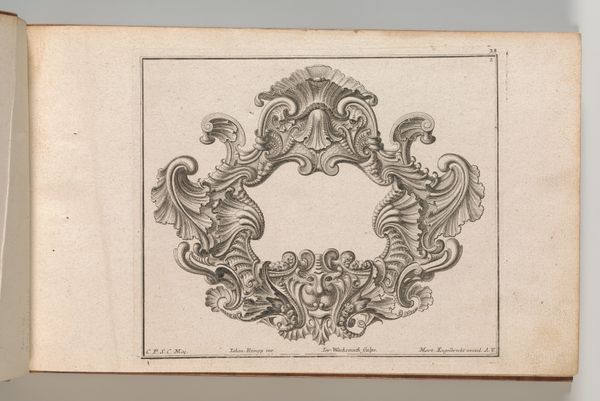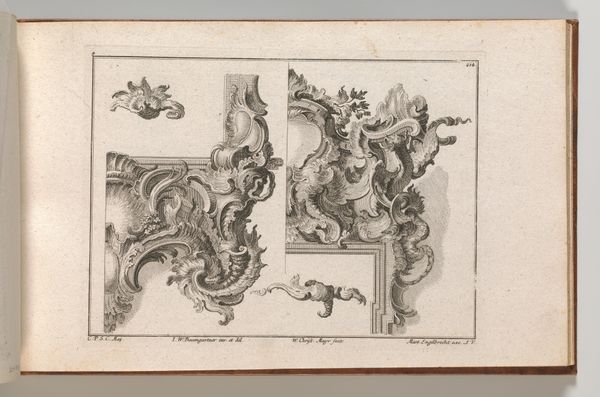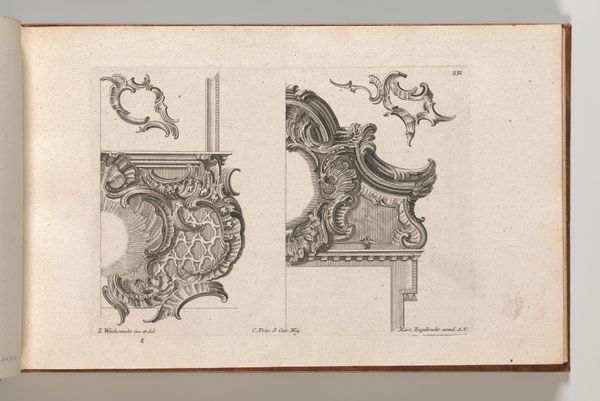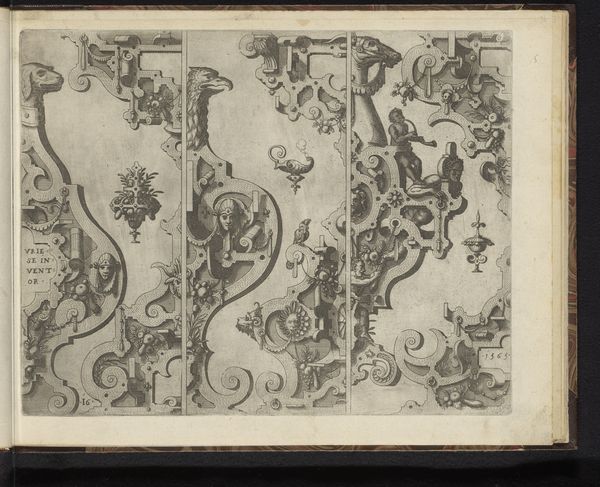
Suggestion for the Decoration of the Lower and Top Right of a Frame, Plate 4 from: 'Unterschidliche Auszierungen zu Thüren und Fenster, etc. etc. sehr nutzlich zu gebrauchen' 1745 - 1755
0:00
0:00
drawing, ornament, print, engraving
#
drawing
#
ornament
#
baroque
# print
#
form
#
geometric
#
history-painting
#
decorative-art
#
engraving
Dimensions: Overall: 8 7/16 × 13 3/4 in. (21.5 × 35 cm)
Copyright: Public Domain
Curator: Ah, here we have "Suggestion for the Decoration of the Lower and Top Right of a Frame," plate 4 from a series titled "Unterschidliche Auszierungen zu Thüren und Fenster, etc. etc. sehr nutzlich zu gebrauchen," created sometime between 1745 and 1755 by Jeremias Wachsmuth. Editor: Whew, that's a mouthful! My immediate thought? It's all flourish and fabulous curves! I feel like I should be wearing a powdered wig just to look at it. Curator: Exactly! Wachsmuth offers us a glimpse into the decorative fervor of the Baroque period. These aren't standalone artworks but rather part of a larger pattern book. Imagine craftsmen consulting these engravings, then incorporating these flourishes into actual architectural elements. Editor: So, like a 18th-century IKEA catalog, but for seriously ornate trim? The thought of someone trying to recreate these swirling shapes...talk about pressure! What materials were typically used back then for the patterns in the engraving? Curator: Primarily wood or stucco, and maybe even wrought iron. These designs were meant to imbue even mundane objects with an air of aristocracy, showcasing wealth and refinement. The geometric basis gives structure to the ornament which allows it to retain its from. Editor: So, this image becomes not just pretty curlicues, but a peek into a specific set of values? To give even a simple frame all of this attention. And does it do something beyond? Is the engraving as "nutzlich zu gebrauchen," useful, as the title implies? Curator: Indeed. Art functioned very differently back then. Skill and ornament implied knowledge and value. By preserving and studying period pieces like this, we learn about cultural obsessions and standards that often differed vastly from ours. To study ornament opens a window into a worldview. Editor: I see. I'm struck by how even design instructions can tell stories! It all makes it such a human document, in the end.
Comments
No comments
Be the first to comment and join the conversation on the ultimate creative platform.

